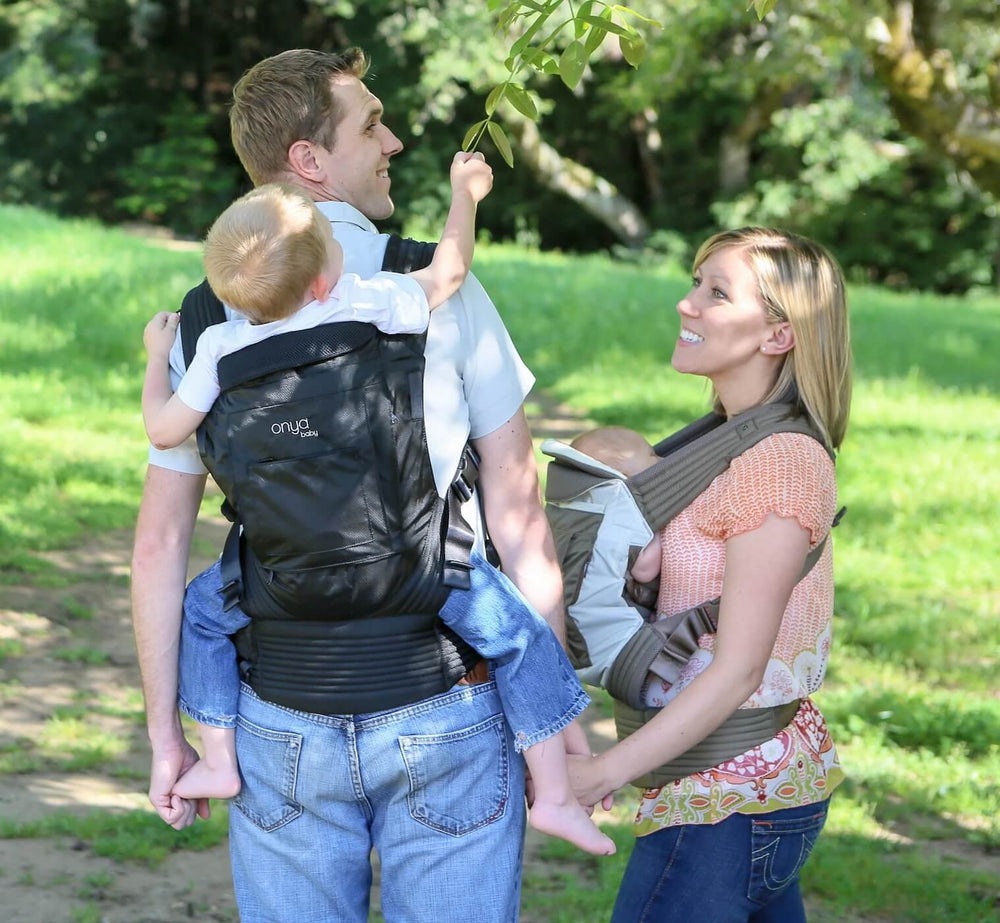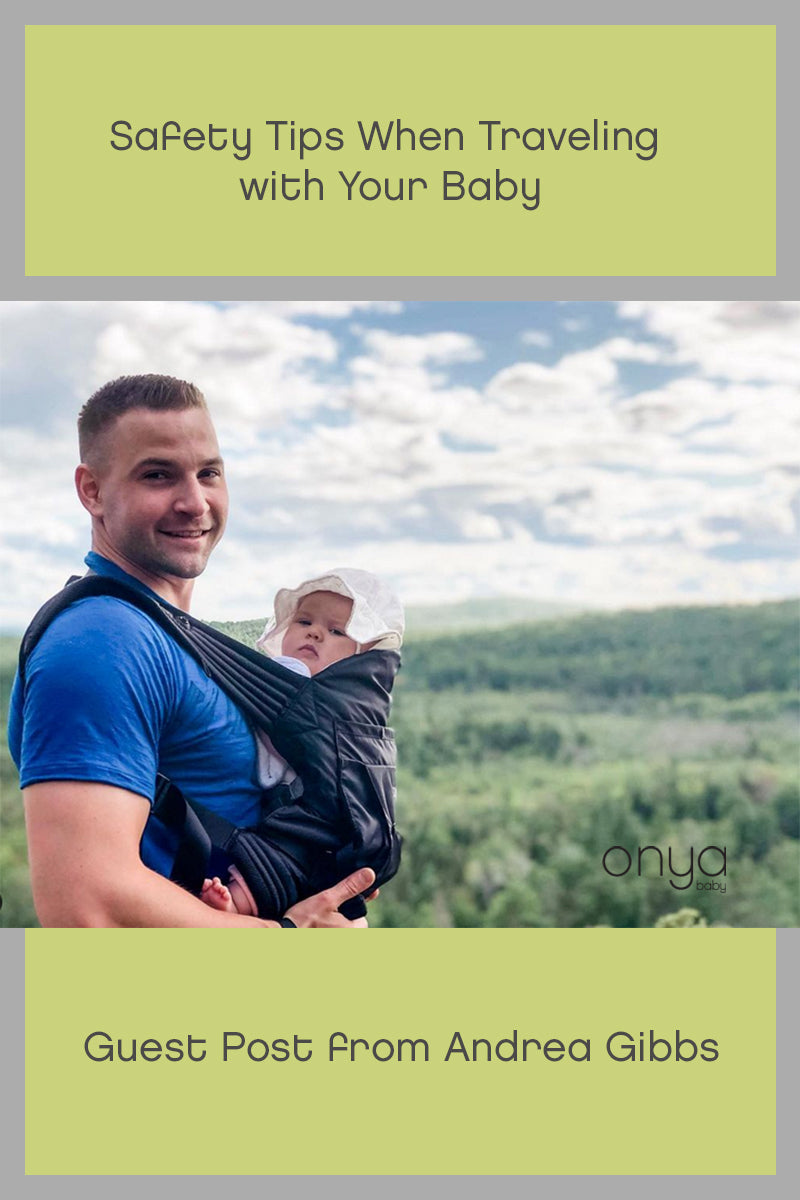Babywearing: The Complete Guide to Carrying Your Baby

We were both honored and thrilled when StrollerTraffic asked for our assistance in writing a complete guide to babywearing. They wanted to address a few of the more controversial topics in the world of baby carriers, including hip dysplasia, carrying your baby foward-facing out, and “crotch-dangling.” There are some excellent, thoughtful and researched answers in this guide, provided by a host of experts in the field – a handful of top manufacturers, doctors, and gear experts – that are well worth reading in your quest to learn about the most beneficial ways to wear your baby. So, read on. It’s a good one. Should you want to read the original article, we added a link that will redirect you to it over at StrollerTraffic.
From StrollerTraffic:
First things first. Wraps, slings, and soft-structured carriers. What’s the difference?
“Though soft-structured carriers, slings and wraps all serve the same primary function—to carry your baby on your body and leave your hands free—they are all built differently,” explains Onya Baby creator Diana Coote. “A wrap is a long piece of fabric, measured in meters. There are as many ways to tie a wrap as there are parenting styles. Both woven (non-stretch) and knit (stretchy) wraps are available, each with its own set of pros and cons.
A sling is a simple, one-shouldered baby carrier that is essentially a loop of fabric folded lengthwise to form a pocket. The wearer places the sling on one shoulder and the baby in the fabric and they’re ready to roll. There are two types of slings: ring slings, which offer adjustability for more than one wearer, and pouch slings. Some pouch slings are adjustable, but most are not and must therefore be properly sized for the wearer.
A soft-structured carrier (SSC) is a modern take on traditional Asian-style baby carriers, in particular the Mei Tai and Onbuhimbo—except an SSC uses buckles instead of ties. The beauty of the buckles is that it’s much simpler and quicker to put on a SSC while still retaining the wide range of adjustability for many different sizes of babywearers.”
Got it. Is one category safer than the others?
For starters, “None is meant for carrying premature or low birthweight babies,” says pediatrician and AAP Fellow Dr. JJ Levenstein. But parents need to be especially careful with slings. “The U.S. Consumer Product Safety Commission (CPSC) is advising parents and caregivers to be cautious when using infant slings for babies younger than four months of age. In researching incident reports from the past 20 years, CPSC identified and is investigating at least 14 deaths associated with sling-style infant carriers; twelve of the deaths involved babies younger than four months of age.
As for soft carriers and wraps, the CPSC has received reports of two fatalities associated with soft carriers—both due to positional asphyxia (one child upright in the carrier with respiratory distress, the other face-down when a parent fell asleep with the carrier on and the baby still in it); and 91 non-fatal incidents due to falling from the carriers—caused by large leg holes permitting the egress of the baby, failure of buckles or straps, or the adult falling with the baby in the carrier, sustaining an injury.”
What are the most important things to keep in mind, when choosing a carrier?
“Make sure the carrier hasn’t been recalled and is in good shape,” advises our gear guru, Jamie Grayson of the Baby Guy NYC. “The carrier should be free of defects and holes, and should have nice linear stitching with consistent stitches", “Test the buckles so they click when you put them together. No rough fabrics or strange odors.”
Dr. Amanda Weiss Kelly (Division Chief, Pediatric Sports Medicine, UH Rainbow Babies and Children’s Hospital) also points out that, “It should be safe and easy for one person to take on and off by themselves. Parents should also pick a carrier that is comfortable for them", “Parents should look for a carrier that distributes the weight of baby evenly on their hips and shoulders, which will allow for a much more comfortable carry".
But according to Coote (Onya), the most important safety aspect is “making sure that the manufacturer is in compliance with all safety regulations and that the carrier’s design has been tested to passing in a third-party certified testing facility. Because this is now law, all carriers on the market fit this criteria, unless you purchase from a home-based manufacturer.” Dr. Levenstein concurs, saying, “Don’t buy one used or second hand.” Levenstein also adds that all babies should meet the specific weight requirements outlined by each manufacturer. “Don’t purchase a carrier meant for an older child, and assume your baby will “grow into it”—as the leg holes, support, and structure may not be safe for a younger baby.”
What do you think?
Do you have any additional questions about babywearing?Please post below, we’re listening!
Happy babywearing!








